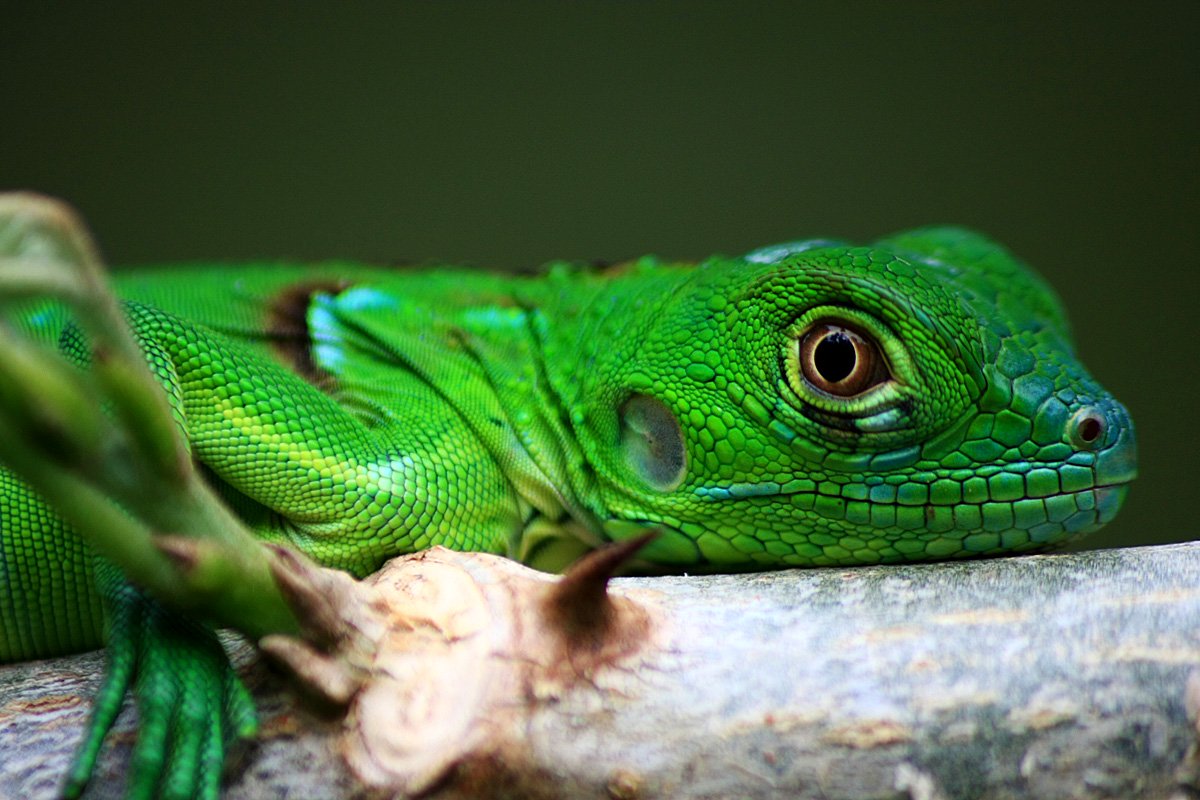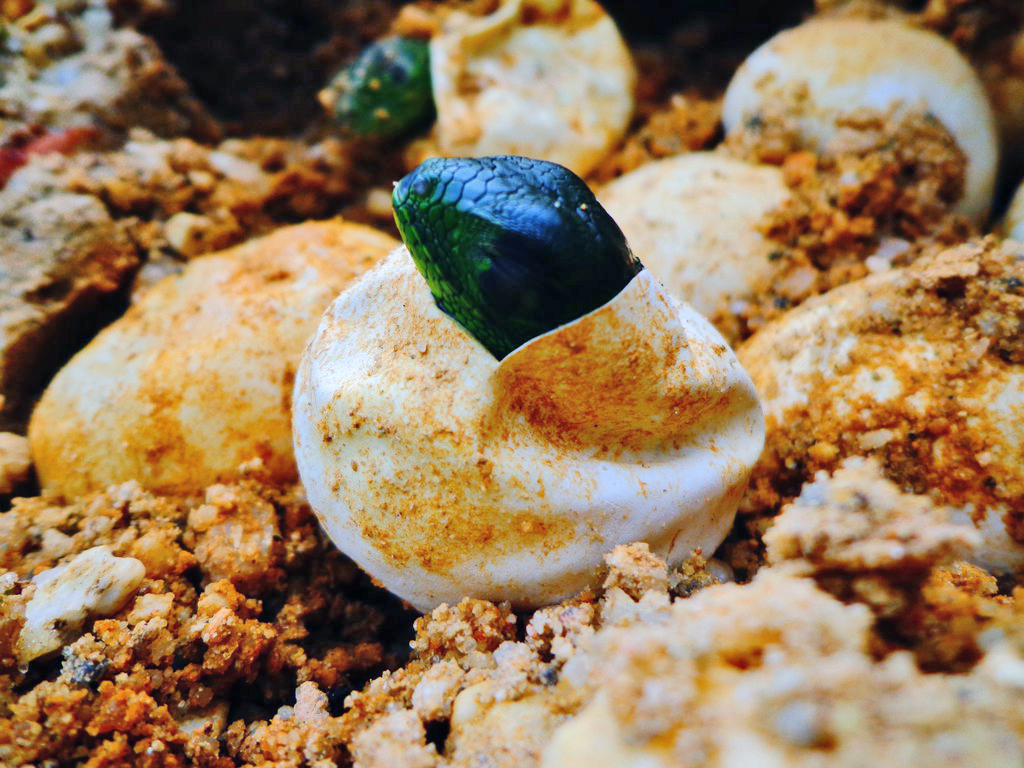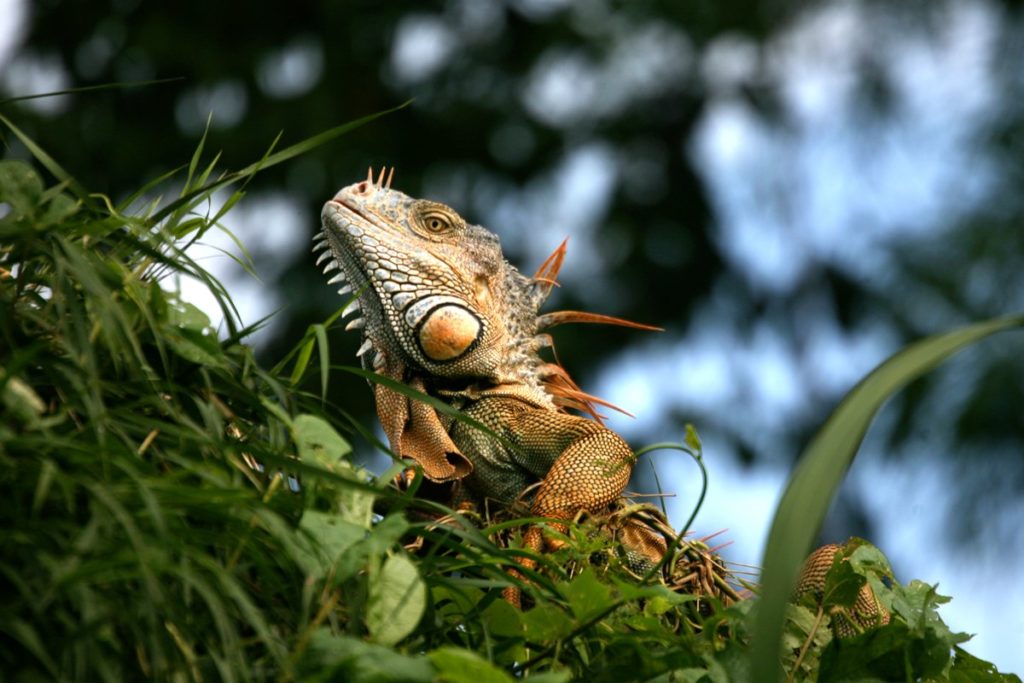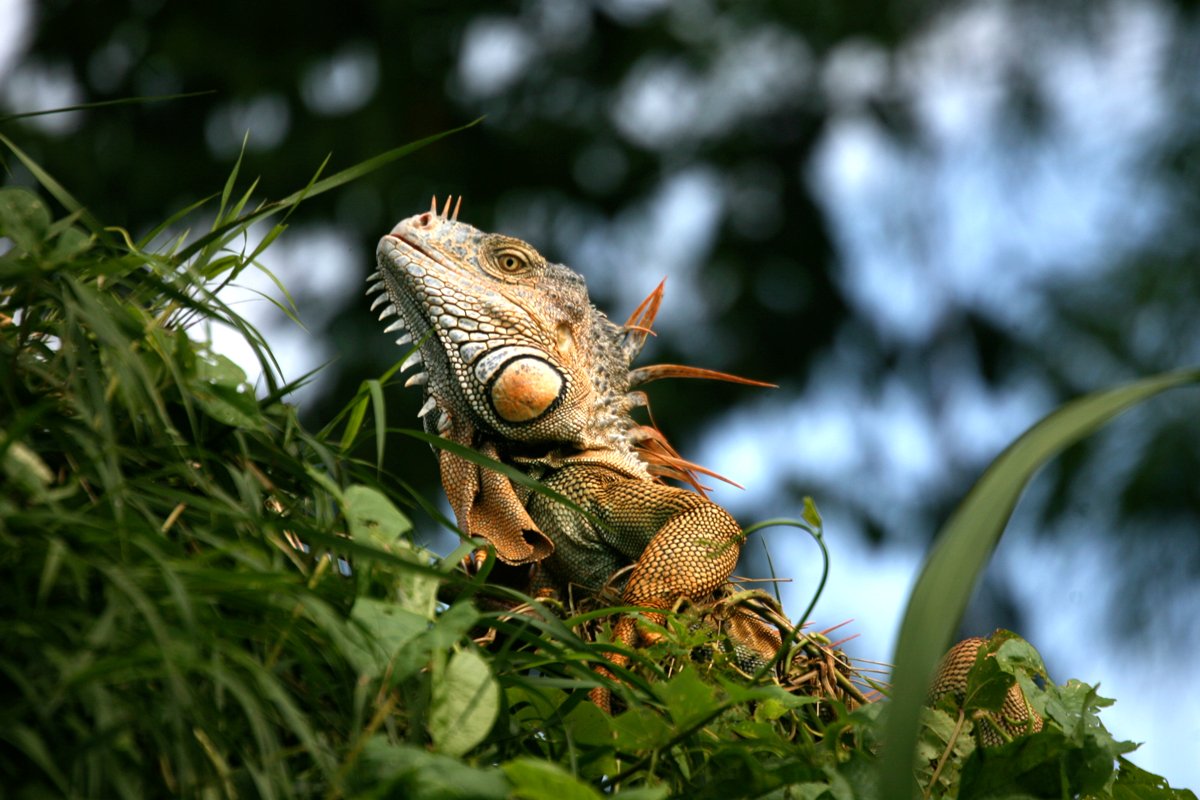Lizards of Belize – What makes the Belizean Iguana Incredible!
Having briefly talked about the ubiquitous iguana of Belize’s forests and rivers in a recent post (Canoeing in Belize, May 7), it occurred to us that this amazing reptile, which plays such an important role in Belize’s history and ecology, deserved more than a mere mention.
So here, starring in its own post – the Incredible Iguana of Belize!
First, some background on our star: Even though it goes through various colour changes during its life, it is technically known as the Green Iguana, with the rather unimaginative scientific name of Iguana iguana (order Squamata, sub order igaunea, family Iguanidae, genus iguana).
The name iguana itself is said to come from the native Caribbean Taino language, iwana.
Here in Belize things are a bit more imaginative, with Bamboo Chicken, Guana and Garobo for the more bigger, more mature males, who take on an orange hue and can grow up to five or six feet from nose to tail tip.
Why Bamboo Chicken, you may ask? The iguana has graced many a Belizean table over the years, with its meat and eggs once – and still in certain areas – a welcome part of the national diet. And, like most unfamiliar game, when people ask what it tastes like, the usual answer is, well… chicken.

Fortunately, the iguana seems to have been able to cope with man and other predators, as it is still abundant along the riverbanks of Belize, where many a visitor has been startled by the loud splash as it hits the water when frightened.
And it can be quite a splash, as Iguanas can get pretty big and like to hang out in the tallest trees along the rivers, and can often be seen on rocks sunning themselves.
Sunlight is essential to these cold-blooded critters, who barely move until they are warmed up to about 75°F or more, which gives credence to the term, chilled. Once energised, they begin hunting, establishing and maintaining territory and, when the time is right, mating.
If you happen to see males bobbing their heads up and down vigorously and pushing their dewlaps (a fold of skin under the chin) out, you know there’s some aggression going on, usually between two males, with the resident alpha defending his territory from usurpers.
If this display isn’t enough, it can escalate into a full-scale brawl, which can result in serious injury or even death to one of the combatants.
But usually, the Iguana is a pretty mellow creature, peacefully living on an abundant supply of leaves, fruits, berries, and flowers.
One of the coolest features of the iguana is the presence of a “third eye”, not in the mystical or Hindi sense, but as an actual transparent membrane in the back of its head.
More formally known as the parietal region, it looks like a translucent scale about 5mm wide above the centre of the iguana’s head. While not able to “see” exactly, it can make out shadows and images cast by hawks and other predators. When alerted to this, the iguana turns its head and uses its real eyes to make the decision to flee, fight, or hang out. It’s a unique early warning system that has much to do with the iguana’s survival as a species.
The crafty reptile’s other defences are its colouration, which helps it blend into the surrounding forest, its long, whip-like tail, and the ability to leap off branches, dive into water and swim beneath the surface for some distance.

Then there’s the interesting sensory device known as the Jacobson’s Organ, which is located in the mouth. The iguana’s moist, split tongue picks up molecules from the air that the Jacobson’s Organ identifies as something to investigate, ignore or flee from.
So when you next see an iguana lazily sunning itself, consider that it is a collection of quite sophisticated sensory mechanisms constantly analysing and appraising it surroundings for opportunities or threats.
How they make little iguanas
The female iguana doesn’t get as large as the male, going just going over four feet, and has a different colour scheme. As the male becomes orange, the female takes on the colour of bark or wood, a combination of green, black and brown when she’s ready to mate, usually around December to February in Belize. During this time the male is releasing some pheromones from scent glands to attract the females.
After about 60 days after mating the female’s eggs have become fully developed and she retires to a nice warm spot on the riverbank to dig a chamber some 2 to 4 feet deep and running anywhere from five to ten feet in length. At the end of this nursery chamber she’ll lay between 20 to 60 eggs, each one about one by one and a half inches. She then closes off the mouth of the chamber, says ta-da and goes back to the trees, leaving the young to fend for themselves (we warned you that these were cold-blooded animals).
After about 90 days, and before the heavy rains begin around the end of June, the eggs finish their incubation and new iguana hatchlings appear, with a light, lemon green colour and dark stripes running the length of the body, and perhaps some turquoise blotches to the side of its head and shoulders. After a week or so, the green becomes deeper and the turquoise disappears. The juvenile iguana in Belize will remain with shades of green for almost three to four years, but by the fifth year will lose the green colour completely.

The iguanas then become mature between two and three years of age, with the changing from the normal green and dark brown into light shades of orange and the female taking on her fertile camouflage.
So the next time you come across a Belizean iguana sunning itself or diving into the water as your canoe passes we hope you’ll see more than just some lazy lizard lounging around, and appreciate that here is another example of nature’s marvellous ability to adapt and evolve. And when you consider that he or she is just one of hundreds of thousands of crucial components to Belize’s rainforest habitat, a habitat of amazing interdependence and diversity, we hope that you’ll share our sense of never ending excitement and appreciation for the sheer elegance of our natural world.


Great read about our amazing Green Iguanas.Coming soon to beautiful San Pedro, Belize,its first Iguana Sanctuary. Where we care for of 200 iguanas.You can walk a short trail and as well feed them.
This was quite Interesting and sure informative. I enjoyed reading every word and hence, learned quite a bit about the Belizean Iguanas that I never knew or even thought about and I am Belizean. Thank you!